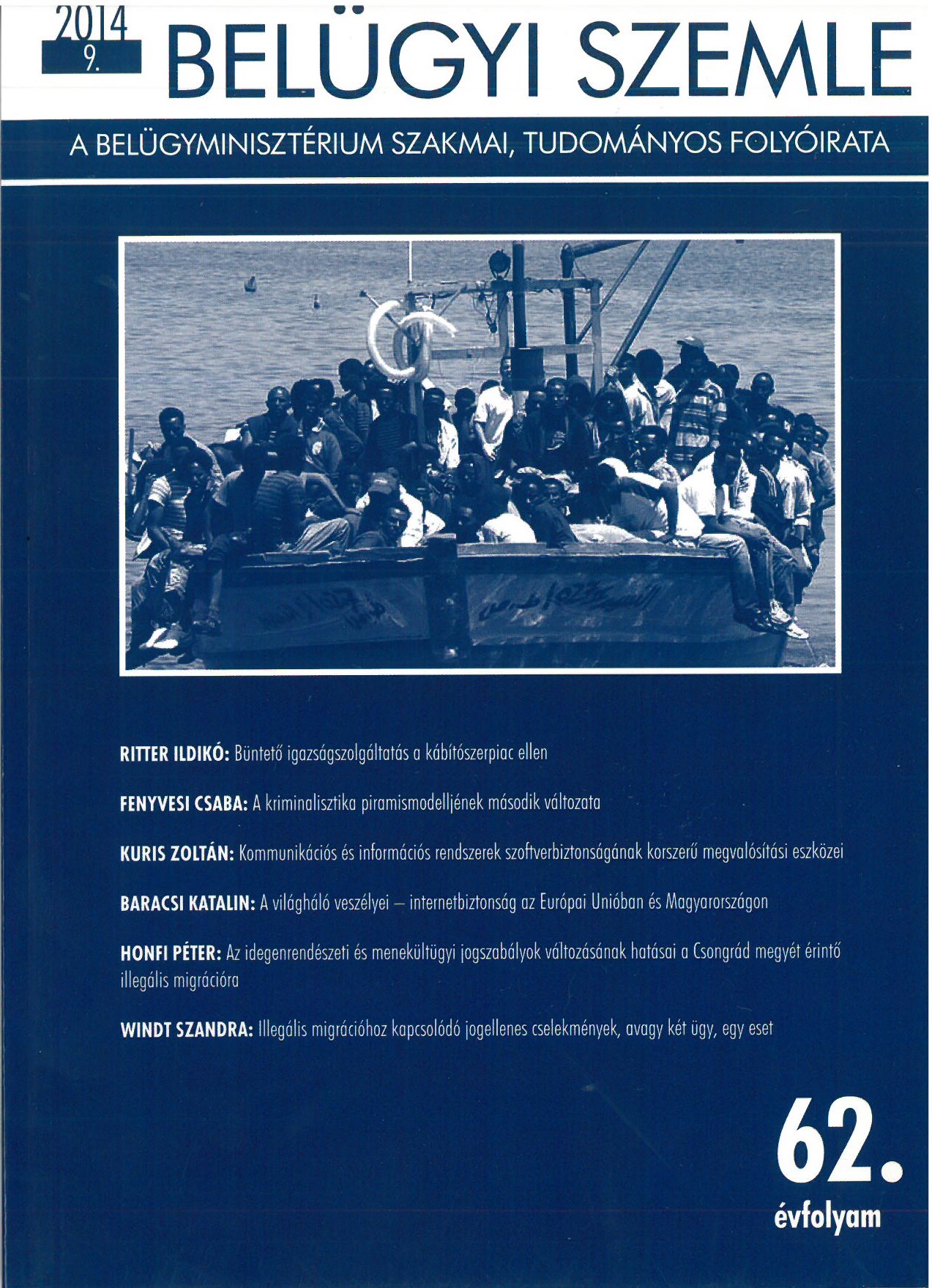Keywords
crime geography
research
crime maps
research
crime maps
How to Cite
The role of criminal geography in policing . (2024). Academic Journal of Internal Affairs, 62(9), 95-107. https://doi.org/10.38146/bsz-ajia.2014.v62.i9.pp95-107
Abstract
Focusing on its potential in policing in Hungary, the author provides an overview of the development of the discipline of criminal geography.
References
.

This work is licensed under a Creative Commons Attribution-NonCommercial-NoDerivatives 4.0 International License.
Copyright (c) 2024 Academic Journal of Internal Affairs
Downloads
Download data is not yet available.
Similar Articles
- Dana Lia Palásti, Committing crime on railway between 2016 and 2020 , Academic Journal of Internal Affairs: Vol. 73 No. 2 (2025)
- Zsuzsa Piskóti-Kovács, Possible new generation of crime maps: application of surface models to investigate crime in the northern Hungarian region , Academic Journal of Internal Affairs: Vol. 64 No. 11 (2016)
- Klára Kerezsi, Márton Gosztonyi, Attila Polák, The criminological aspects of Roma and non-Roma co-existence , Academic Journal of Internal Affairs: Vol. 62 No. 7-8 (2014)
- Ivett Nagy, Examining certain changes to the current Code of Criminal Procedure in the light of the fight against organized crime , Academic Journal of Internal Affairs: Vol. 71 No. 4 (2023)
- Csongor Herke, Tibor László Szécsi , The role of event data recorders (EDRs) in proving traffic offences , Academic Journal of Internal Affairs: Vol. 73 No. 4 (2025)
- Katalin Molnár, ‘Safety anywhere and anytime’ , Academic Journal of Internal Affairs: Vol. 69 No. 6 (2021)
- Miklós Lévay, On the Fourteenth United Nations Congress on Crime Prevention and Criminal Justice; the Kyoto Declaration , Academic Journal of Internal Affairs: Vol. 70 No. 7 (2022)
- Vince Vári, Crimes related to new psychoactive substances in rural segregates of Miskolc in Hungary , Academic Journal of Internal Affairs: Vol. 70 No. 2. ksz. (2022): Special Issue
- Melinda Leila Hezam, The role of religious education in tertiary crime prevention , Academic Journal of Internal Affairs: Vol. 72 No. 3 (2024)
- Szabolcs Mátyás, A new approach to the spatial representation of crime , Academic Journal of Internal Affairs: Vol. 73 No. 1.ksz (2025): Különszám
You may also start an advanced similarity search for this article.
Most read articles by the same author(s)
- János Prof. Dr. Sallai, 180 years of Hungarian police science , Academic Journal of Internal Affairs: Vol. 72 No. 5 (2024)
- János Sallai, The first proposal for a Police Act , Academic Journal of Internal Affairs: Vol. 72 No. 6 (2024)
- János Sallai, Judit Borszéki, INTERPOL 100 ‘Connecting Police For a Safer World’ , Academic Journal of Internal Affairs: Vol. 71 No. 11 (2023)
- Johanna Farkas, János Sallai, Ernő Krauzer, The History of Law Enforcement Culture in Hungary , Academic Journal of Internal Affairs: Vol. 68 No. 2. ksz. (2020): Special Issue
- János Sallai, Judit Borszéki, The beginnings of international police cooperation , Academic Journal of Internal Affairs: Vol. 70 No. 5 (2022)
- János Sallai, The evolution of law enforcement science in Hungary , Academic Journal of Internal Affairs: Vol. 63 No. 6 (2015)
- Zsolt Lippai, János Sallai, Police Science asks space for itself , Academic Journal of Internal Affairs: Vol. 70 No. 9 (2022)
- János Sallai, Judit Borszéki, INTERPOL 100 ‘Connecting Police For a Safer World’ , Academic Journal of Internal Affairs: Vol. 71 No. 3.ksz (2023): Különszám
- János Sallai, The history of medical or health policing from the antiquity to the end of the 19th century , Academic Journal of Internal Affairs: Vol. 68 No. 5 (2020)
- János Sallai, The Development of Police Sciences in the 18th and 19th Century in Western Europe and Hungary , Academic Journal of Internal Affairs: Vol. 63 No. 12 (2015)
